Bologna may be Italy’s culinary capital, but this city has more to offer than heaping plates of pasta. If you can squeeze in some Bologna sightseeing between meals, you’ll be richly rewarded.
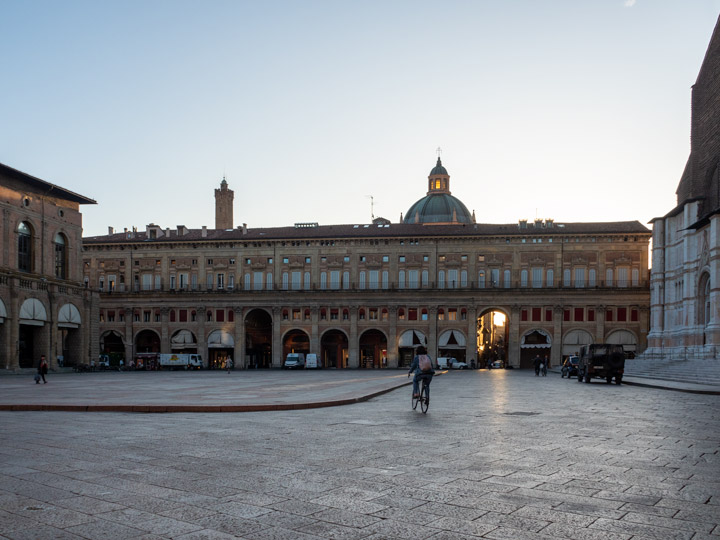
From hilltop basilicas to hidden window views, there are Bologna attractions to suit every type of traveler.
Architecture fans will love the UNESCO listed porticoes and grand cathedrals. View-seekers will delight at the panoramas from the top of Asinelli Tower and San Luca. And history buffs will marvel at the world-class museums filled with ancient relics and remarkably preserved frescoes.
Whatever your preference, I highly recommend spending at least three days in Bologna. This city deserves to be savored, not skimmed.
This post contains affiliate links. As an Amazon Associate, I earn from qualifying purchases. For more information, click here.
Should you buy the Bologna Welcome Card?
Disclosure: I received a complimentary Bologna Welcome Card PLUS as part of my work with the Bologna tourism board.
The short answer is: yes. The Bologna Welcome Card PLUS is the best city travel card I’ve encountered in terms of value and ease of use.
When deciding whether or not to buy a city card, you need to consider two things: cost savings and convenience. Unlike some city cards, you don’t need to do everything on the list of covered Bologna attractions to get your money’s worth.
This post doesn’t even cover half of the included attractions, and you’d still save 4 euros by buying the Bologna Welcome Card PLUS rather than individual tickets.
Add in the ability to show the card on your smartphone, and it’s a no-brainer.
Bologna Sightseeing Attractions
Quadrilatero
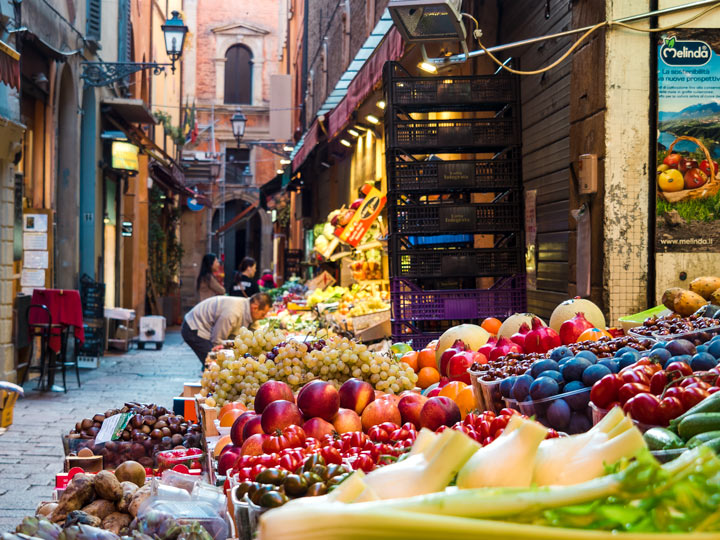
The Quadrilatero is the beating heart of Bologna’s food culture. It’s been a marketplace since the Middle Ages, with narrow alleys brimming with shops and stalls selling fresh produce, meats, cheeses, pasta, and other artisan goods.
Even if you don’t plan to eat or shop, a morning stroll through the Quadrilatero is still one of the best things to do in Bologna. The glass storefronts are a visual delight, offering glimpses of curing hams and yellow tortellini, and smells of sharp cheese and soft flowers.
Getting here early will also help you avoid the tour groups and restaurant-goers that clog the streets later in the day.
Cattedrale Metropolitana di San Pietro
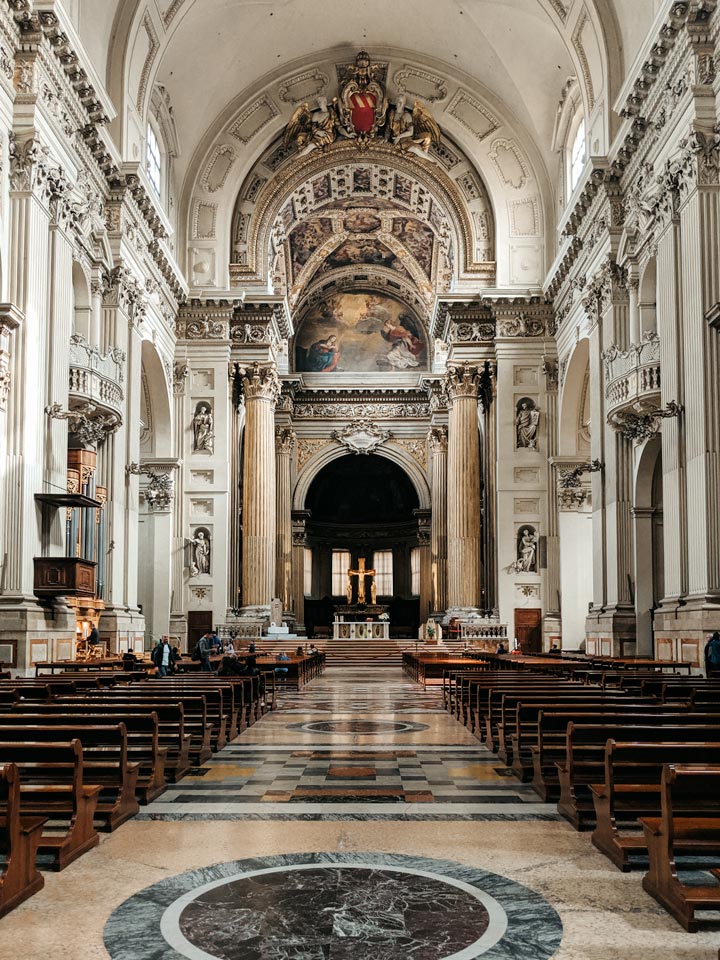
Also known as the Bologna Cathedral, the Metropolitan Cathedral of Saint Peter is nearly 1,000 years old. While the exterior looks fairly plain, the interior is jaw-droppingly beautiful, with towering arches and columns of white stone.
However, the impressive structure you see today is quite different from its original form. The cathedral was renovated extensively throughout the 17th and 18th centuries, though the massive bell tower was left unchanged.
The Bologna Cathedral is by far one of the best free Bologna attractions. But if you’re open to spending a bit of money, you can pay 5 euros to climb the bell tower on Saturday afternoons!
The Two Towers of Bologna
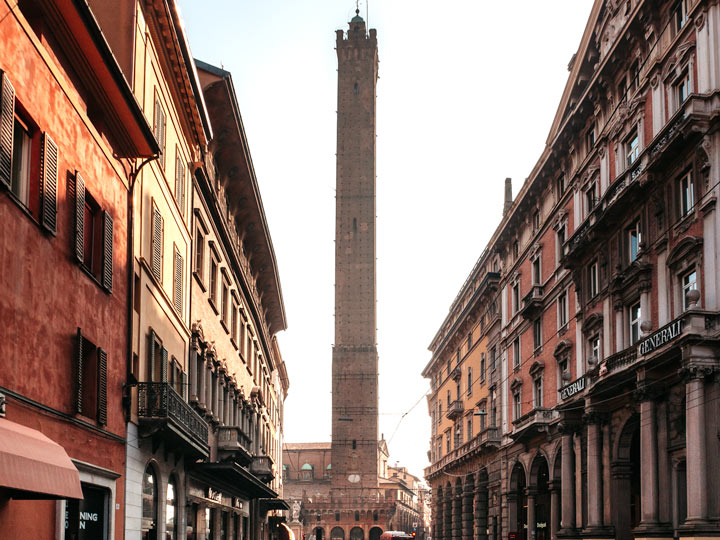
The Tower of Asinelli and the Garisenda Tower are relics of Bologna’s wealthy past. They stand (and lean) at the heart of the city, along the intersection of Via San Vitale and Strada Maggiore.
If you did your Bologna sightseeing during the 1300s, you’d see well over 100 towers reaching towards the sky. Historians believe rich families built them to defend their properties. Today, over a dozen remain standing, though Asinelli and Garisenda are the most well known.
Climbing the 97 meter Asinelli Tower is one of the most popular things to do in Bologna, despite the staggering 498 steps. Luckily, there are numerous spaces to stop and rest along the journey to the amazing view from the top.
Admission costs 5 euros and requires an advanced reservation online or at the Bologna Welcome office. Bologna Welcome Card holders can enter for free without a reservation.
RELATED: 21 Most Instagrammable Places in Europe
Museo Civico Archeologico
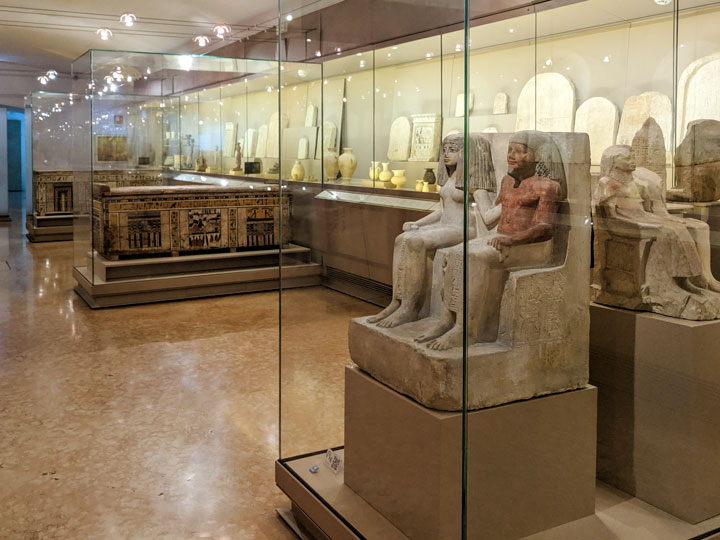
In a city nicknamed “the learned one”, it’s no surprise that you’ll find plenty of world-class museums. The Bologna Archaeology Museum houses Egyptian, Etruscan, and Roman artifacts inside a gorgeous palazzo.
Between the preserved mummies and suits of armor, the Archaeology Museum is one of the top places to visit in Bologna with kids. While most of the displays are written in Italian, many of the rooms have mounted pockets with laminated English language cards.
The museum is larger than it appears, with exhibits spread across multiple floors. Plan to spend at least 90 minutes here if you want to see everything. I particularly enjoyed the massive display of Roman black-figure pottery.
Admission is 6 euros and is covered under the Bologna Welcome Card.
Museo Internazionale e Biblioteca della Musica
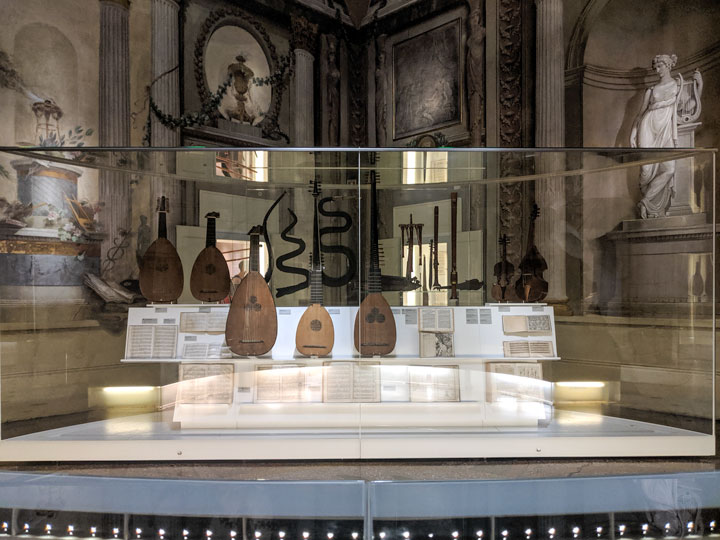
Many visitors don’t realize that Bologna has deep musical roots. In fact, it’s been named a UNESCO City of Music thanks to its millennium-old tradition of musical study, composition, and performance.
At the International Museum and Library of Music, you’ll get closeup views of old and rare instruments, manuscripts, and even personal belongings of famous performers like Farinelli.
Anyone who loves music or played an instrument will enjoy the exhibition. And like the Archaeology Museum, the whole collection is housed inside a lovely palazzo complete with lavish frescoes and furnishings.
Tickets cost 5 euros, and admission is free with the Bologna Welcome Card.
Santuario Madonna di San Luca
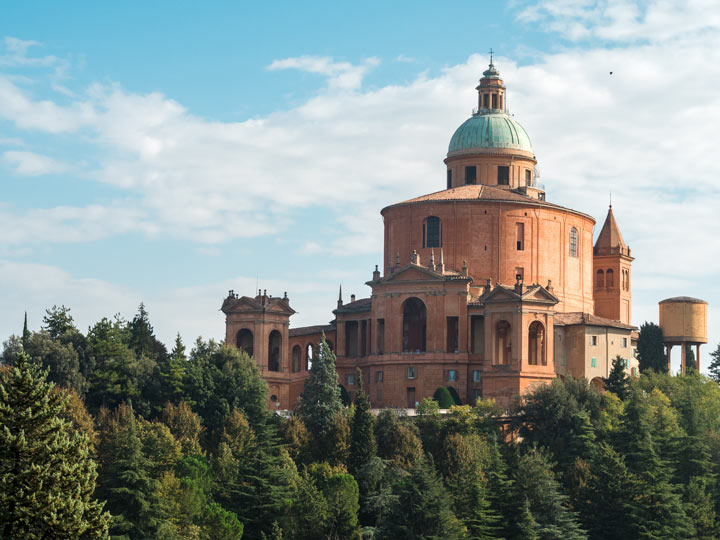
If you want a fairytale experience in Italy, head to the hilltop Sanctuary of the Madonna di San Luca.
This 300-year-old basilica rises out of the forest like Cosette’s castle on a cloud. While it’s a few miles outside of Bologna’s city center, getting here is easy (and cheap!) with the Bologna Welcome Card PLUS.
Catch the green line city bus (which is actually a charming mini-train) from the Piazza Maggiore up to the monastery. It’s a beautiful ride that comes with a multi-lingual audio tour describing the city sights you pass along the way. A round trip ticket costs 10 euros and is free with the PLUS card.
If you’re after a physical challenge, you could skip the train and walk up the world’s longest portico. The 3.5km, salmon-colored Portico di San Luca stretches continuously from the Porta Saragozza to the sanctuary.
Much of the walking route is uphill, with steep climbs for the last kilometer, so bring a water bottle and comfortable shoes.
After exploring the basilica’s gardens, balconies, and interior, head to the small ticket counter near the door. 5 euros (free with the PLUS card) gives you access to the San Luca Sky Experience, a rooftop platform with insane panoramic views over Bologna and the surrounding countryside. You can even see the rolling hills of Tuscany from up here!
Save me for later!
Porticoes
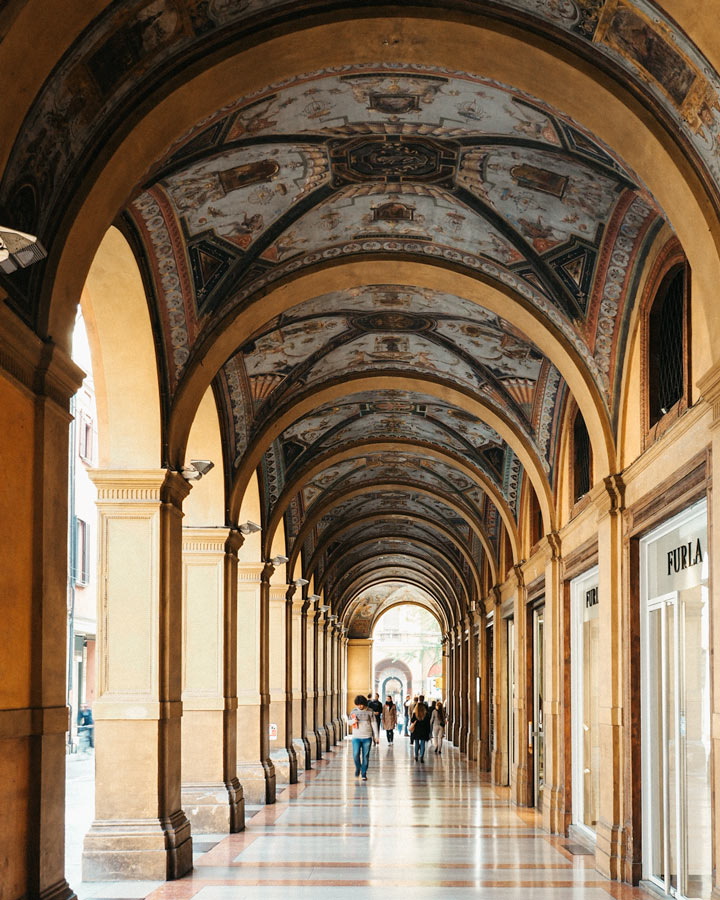
In addition to the famous Portico di San Luca, Bologna’s city center boasts over 35km of porticoes. These covered walkways have been a part of the city’s design since medieval times, earning them a spot on the UNESCO World Heritage list.
From the distressed, dark yellow Portico della Morte, to the beautiful blue and gold stretch along Via Farini, Bologna’s porticoes are closer to art than architecture. They’re especially lovely near sunrise and sunset, when the columns’ striking shadows cut across the ground.
Finestrella
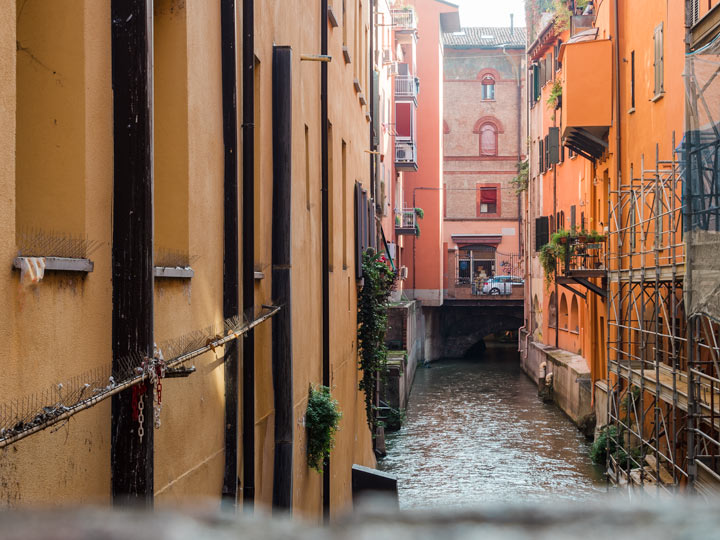
Did you know that you can find a slice of Venice in Bologna? Head to the section of Via Piella between Via Bertiera and Via Augusto Righi, and you’ll see what I mean.
On one side of the street, you’ll find a lovely canal view lined with classic Italian shutters. And on the other side, there’s… a wall.
But upon further inspection, you’ll find a small, square cutout hiding a second canal view. This secret window–the Finestrella–is one of my favorite Bologna sightseeing spots. Sometimes the Finestrella is shut, so keep your eyes peeled for the handle sticking out from the wall.
RELATED: 2 Days in Venice Itinerary for First Time Visitors
Scalinata Del Pincio
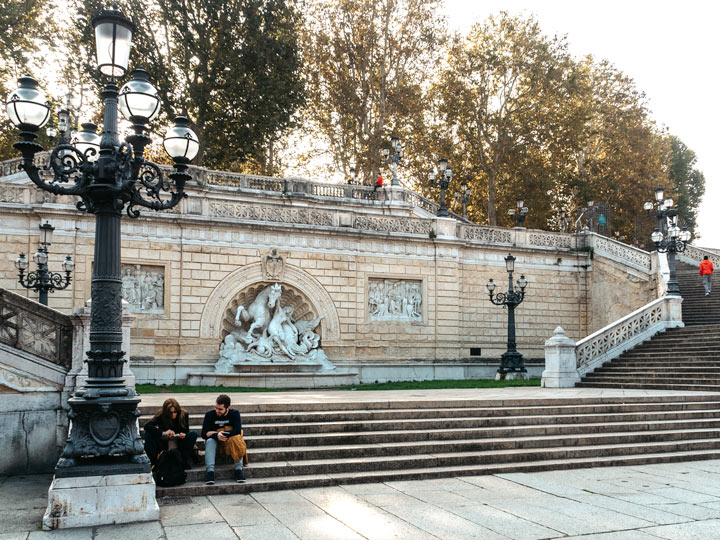
The impressive Scalinata is one of the first things you’ll see after exiting Bologna Centrale station. This elegant double staircase leads up to the Montagnola Park, which offers wonderful views over the surrounding city center.
Be sure to check out the park’s west balcony, where you’ll find pretty lampposts and a great view down the Via dell’Indipendenza.
Santa Maria Della Vita
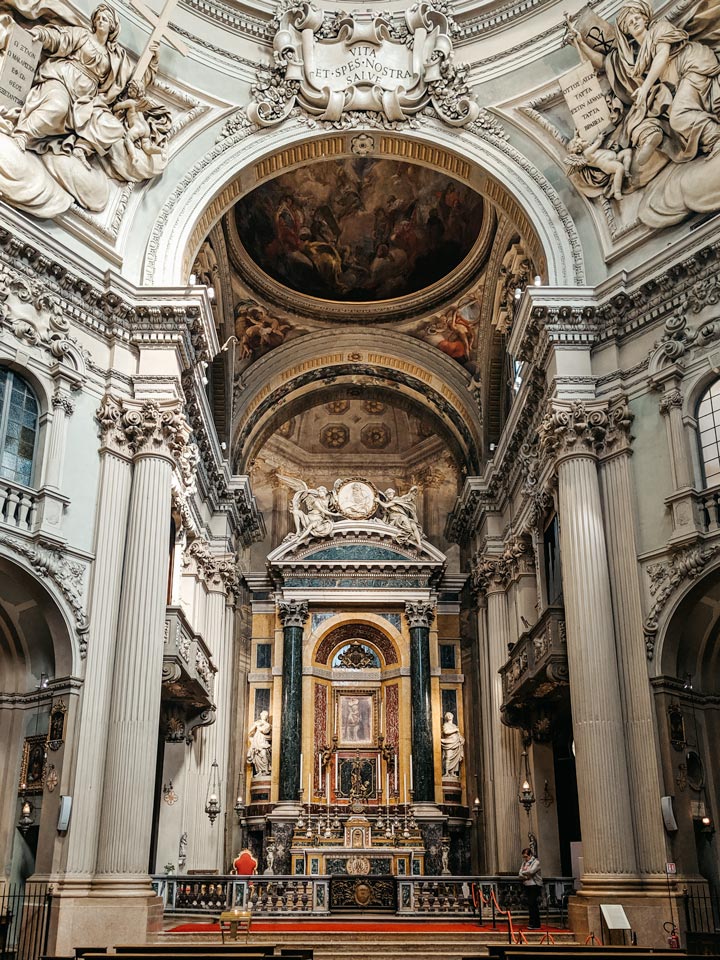
Nestled in the Quadrilaterio, the Santa Maria Della Vita is a quiet reprieve from the surrounding hustle and bustle. Like the Cattedrale Metropolitana di San Pietro, this church’s remarkable interior features white stone, elaborate carvings, and stunning frescoes.
The Santa Maria Della Vita also houses the renowned Compianto, a 15th century collection of sculptures by Niccolò dell’Arca depicting the mourning of Christ. Admission to this area costs 4 euros, but is free with the Bologna Welcome card.
University of Bologna
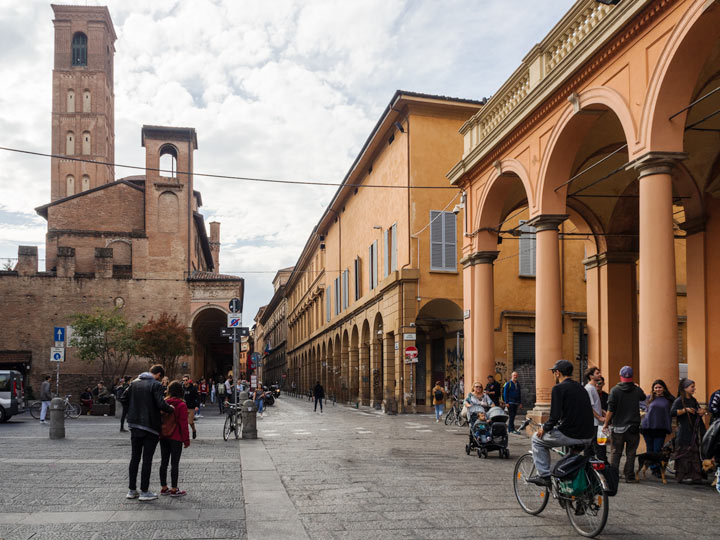
Walking around a school campus is rarely on the “must do list” when exploring a new city. But when that city is home to the world’s oldest university, you need to put it on your itinerary.
Founded in 1088, the University of Bologna is one of Europe’s top academic institutions. The central campus still retains a medieval look, with stone streets and old facades. When the students sit outside, chatting over dog-eared novels and getting into heated arguments, Bologna’s nickname “the learned one” is brought to life.
Pinacoteca Nazionale
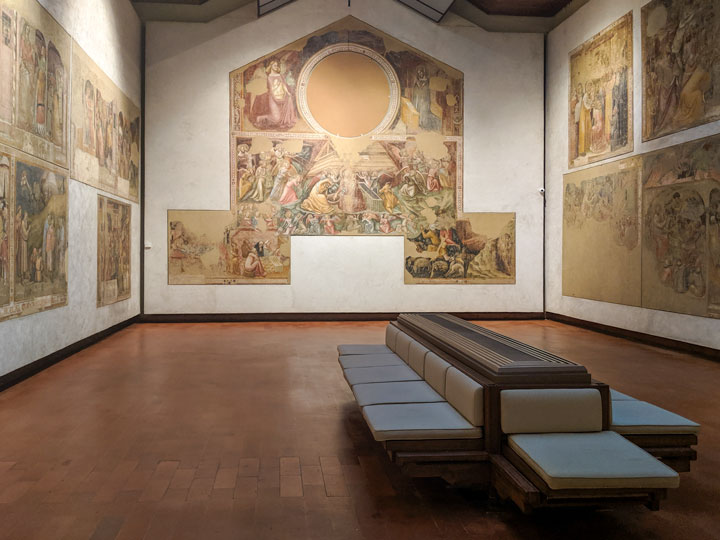
Just north of the university’s central campus, you’ll find the Pinacoteca Nazionale. Also known as the National Art Gallery, the spectacular collection of medieval and Renaissance art makes this a must visit place in Bologna.
Gilded tryptiches, towering oil paintings, and incredibly well-preserved outdoor frescoes line the gallery walls. There’s plenty to see here, but not so much that it feels overwhelming.
Tickets for the main exhibition cost 6 euros, and admission is free with the Bologna Welcome card. The gallery also hosts special exhibits for an additional fee, such as the recent Leonardo Da Vinci showcase.
Villa Ghigi Park
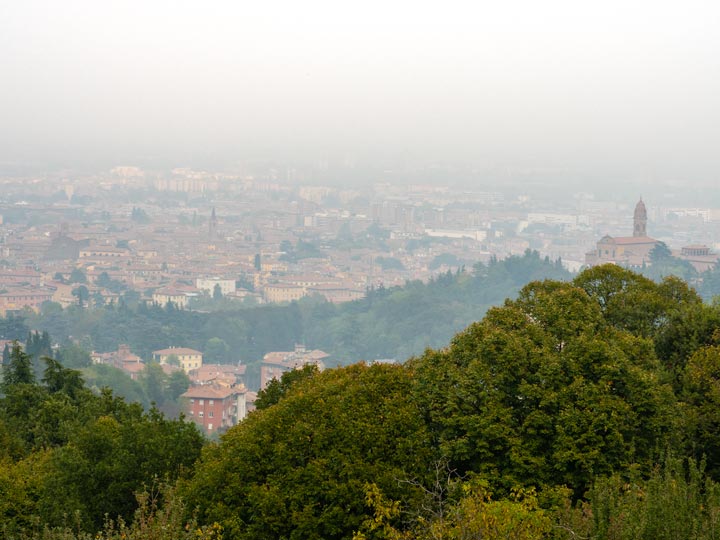
Who doesn’t love a good overlook point? At Villa Ghigi park, you’ll find extraordinary panoramic views of Bologna in an idyllic country setting.
With rolling hills, a vineyard, and serene walking paths, it’s hard to believe that Villa Ghigi is less than a 30 minute walk from the city center. Just follow the Via San Mamolo south, taking the western (right-hand) branch once you reach the tiny green space of Giardino Norma Mascellani Pittrice.
Shortly after the entry gate, there are multiple uphill paths you can take to reach the “Vista Panoramica” point in the southeast. Despite the hazy weather we had, the view over Bologna was hauntingly beautiful as church bells echoed across the valley.
Piazza Maggiore
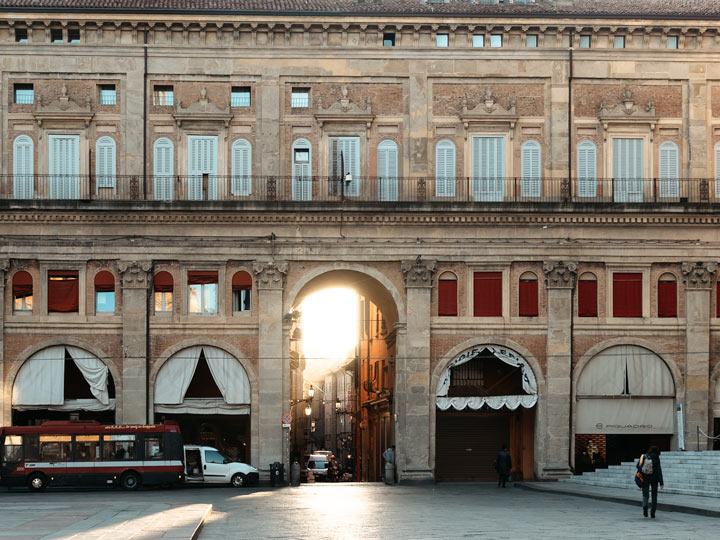
At the heart of every Italian city is the piazza. And Bologna’s Piazza Maggiore is one of the best.
Beautiful porticos, palazzos, and churches form the piazza’s borders, while domes and a clock tower poke out behind the buildings. I highly recommend a morning visit, when locals cycle through on their way to work, and the sun illuminates the archway to the Quadrilatero.
Basilica di San Petronio
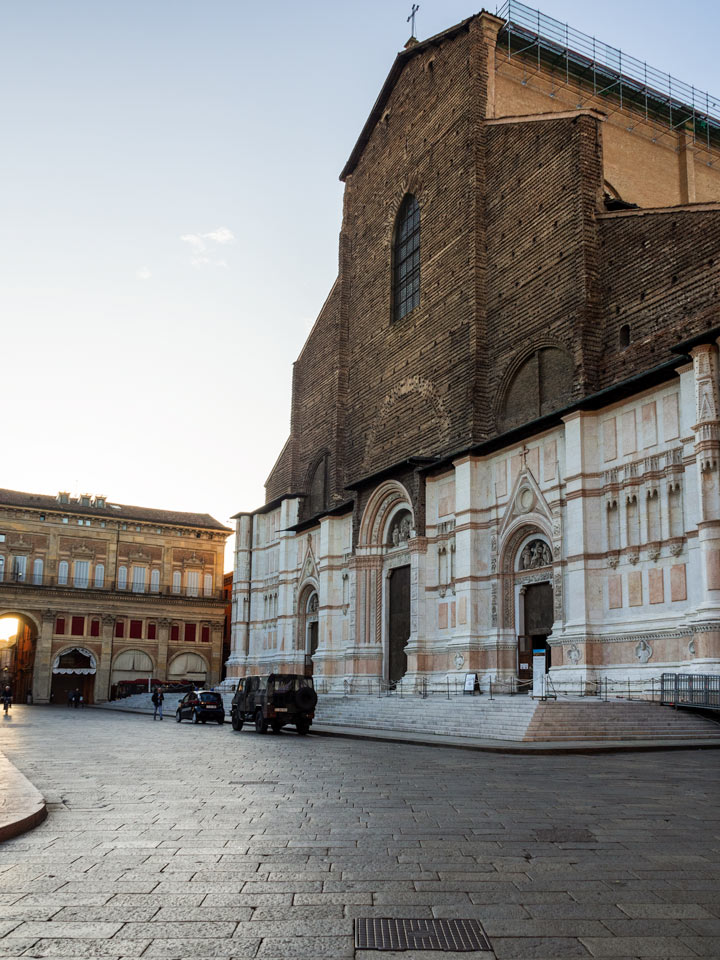
The vast Basilica di San Petronio dominates the south side of the Piazza Maggiore. Dedicated to Bologna’s patron Saint Petronius, it’s the most important church in the city and one of the largest in Europe.
Looking at the facade–half elaborate red and white carvings, and half plain brick–you might think it was unfinished. And that’s because it is! During construction in the 1500s, the money intended for the facade was diverted to the Archiginnasio, part of the University of Bologna’s campus.
Once inside, you’ll find a number of unique features, from the massive sun dial to the nearly two dozen small chapels containing art and artifacts.
But be advised: you’ll miss out on the interior if you don’t follow the dress code. Shoulders must be covered for everyone, and women’s shorts/pants/skirts must reach the knees (apparently men can get away with shorts that fall above the knee).
Before heading to the next Bologna attraction, there’s one more thing to do at the Basilica di San Petronio: visit the terrace for a panoramic view over Bologna!
Near the rear exit off of Piazza Galvani, you’ll find a scaffolding lift that takes you to the 54 meter high platform. Tickets cost 3 euros (free with the Bologna Welcome PLUS card). Note that the terrace doesn’t open until 10am and may be closed due to cold/bad weather.
Admission to the Basilica is free, but if you want to take photos, you’ll need to buy a 2 euro pass.
Piazza del Nettuno
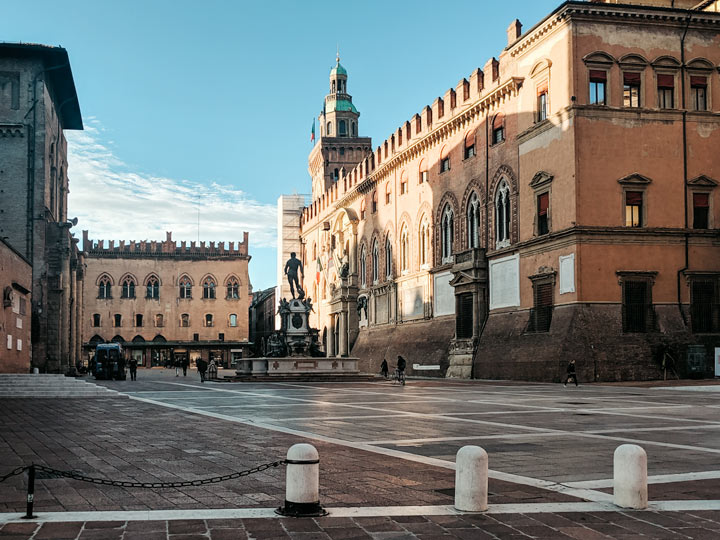
Branching off the north side of Piazza Maggiore, the Piazza del Nettuno is a favorite hangout spot for locals and visitors alike. Named after the grand Fountain of Neptune that sits in the center, the piazza boasts an eye-catching geometric patterned floor.
In addition to the Fountain of Neptune, you’ll also find the Palazzo Re Enzo and Biblioteca Salaborsa, which houses an archaeological museum in the basement.
Hotel Touring Rooftop Terrace
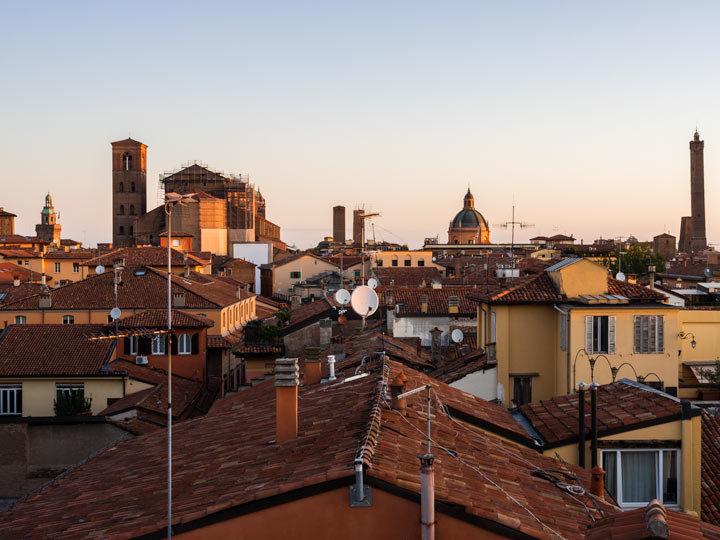
Hotel Touring is the ideal home base for sightseeing in Bologna. It’s a beautifully updated hotel just a few minutes’ walk from the city center, so you can easily pop back for a mid-afternoon rest if you overdo it on the pasta.
Aside from the great location, comfy rooms, and stellar breakfast, the best thing about staying at Hotel Touring is the rooftop terrace.
We took every opportunity to watch sunrises and sunsets from this incredible lounge area, which offers near-360 degree views over the city. You can see everything from the Two Towers to distant San Luca from up top.
Imagine enjoying a glass of wine here after a long day of exploring Bologna. It doesn’t get much better than that!
Book your stay at Hotel Touring today!
The Best Bologna Tours
Knowing what to do in Bologna is only half the battle. If you don’t speak Italian, or want to discover some unique things to do in the city, why not take a Bologna tour?
From Bologna food tours to private guides, here are some of the top rated experiences you can add to your itinerary:
Map of Bologna Sightseeing Spots
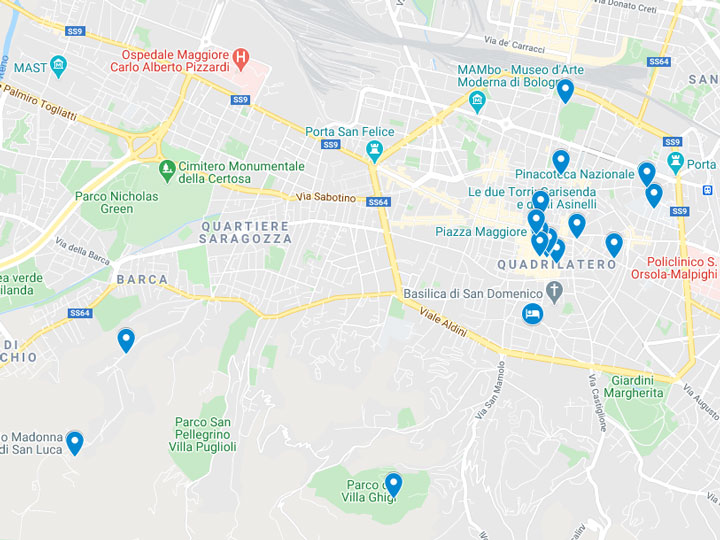
I hope I’ve given you plenty of ideas for what to do in Bologna! Subscribe to my newsletter for more insider travel tips.

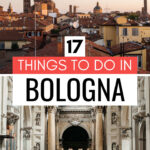
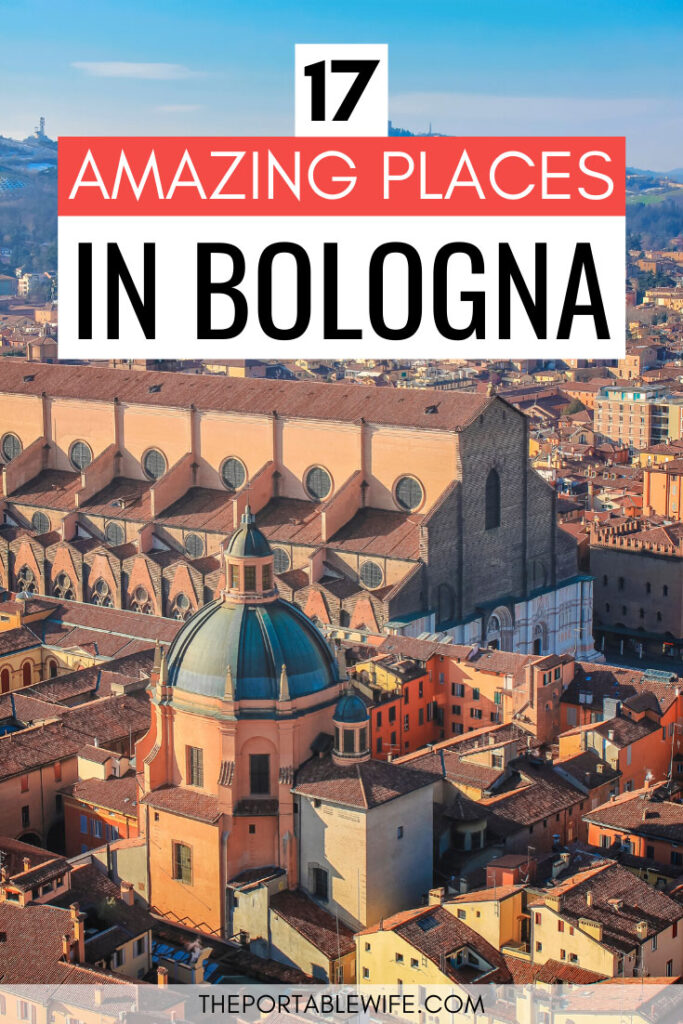
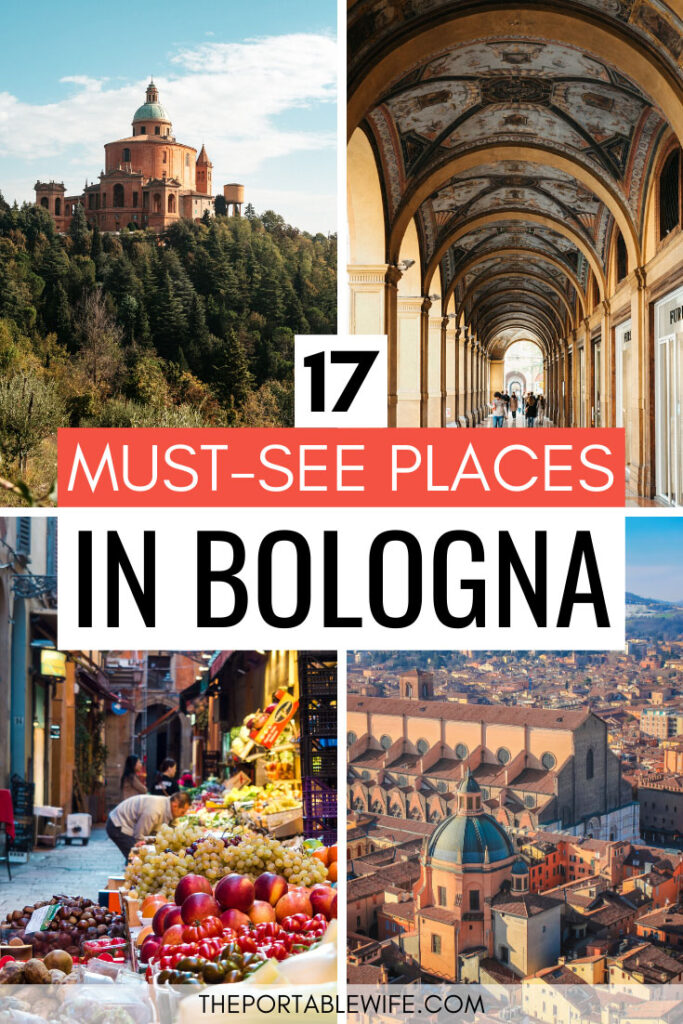
Hi there!
The UNESCO world heritage list mentions nothing in Bologna?
Hi Lisbeth, the porticoes of Bologna were officially added to the UNESCO World Heritage Site list in July 2021!